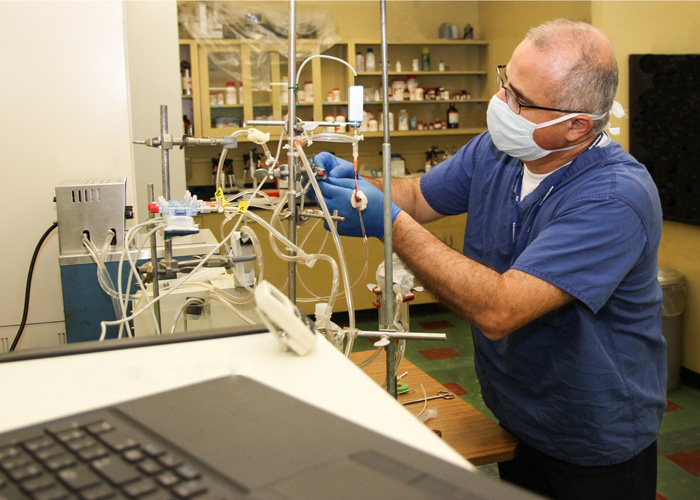Johnson Dissertation Abstract
Advancing Pre-Clinical Multi-Echo fMRI with Inductively Coupled Surface Coils
Dissertation Date: October 18, 2024
Pre-clinical functional magnetic resonance imaging (fMRI) typically involves a gradient-recalled echo (GRE) echo planar imaging acquisition with limited in-plane resolution and thru-plane coverage. Pragmatic spatial resolutions are employed because traditional receive coil technology does not provide sufficient sensitivity. Researchers must sacrifice spatial resolution for adequate signal-to-noise, oftentimes constraining their scientific interpretations.
To address insufficient pre-clinical fMRI spatial resolution, an inductively coupled coil pair, based on a preliminary design patented by faculty members in the Department of Biophysics at the Medical College of Wisconsin, was built. This novel receive coil technology has 5× greater signal-to-noise ratio than a commercial receive coil array product largely considered to be the state-of-the-art. The inductively coupled coil pair was specifically designed to leverage the patented technology’s superior in-plane sensitivity while dramatically enhancing thru-plane sensitivity. The technology has been disseminated to the Medical College of Wisconsin’s Center for Imaging Research and to the National Institute on Drug Abuse.
In conjunction with limited spatial resolution, pre-clinical fMRI studies do not incorporate multi-echo acquisitions though they are routine parts of human fMRI studies. Pre-clinical fMRI studies are normally conducted on ultra-high field magnets, which tend to have stronger magnetic fields than what is used clinically or in human research. Ultra-high fields do yield higher signal-to-noise than clinical magnetic field strengths, but they also shorten T2*. This is problematic for multi-echo fMRI in pre-clinical studies because it relies on sampling the T2* curve with sufficient signal-to-noise per echo while not having access to image acceleration capabilities available to human research. Later echoes are largely dominated by noise and introduce large errors in T2* estimates, which are the basis for modern fMRI de-noising.
An Asymmetric Spin Echo Multi-Echo Echo Planar Imaging (ASEME-EPI) acquisition was developed to address later echoes having detrimentally low signal-to-noise. The pulse sequence begins with a spin echo followed by a series of asymmetric spin echoes. Beginning with a spin echo effectively shortens echo times. Shortened effective echo times mean later echoes have sufficient signal-to-noise to assist rather than detract from T2* estimates. Better T2* estimates allow pre-clinical fMRI studies to incorporate multi-echo technology rather than replacing them with older, less consequential imaging techniques. This new pulse sequence in conjunction with superior receive coil technology sets the stage for pre-clinical fMRI studies to be conducted at extremely high spatial resolutions previously not possible.
Return to Dissertation Schedule


